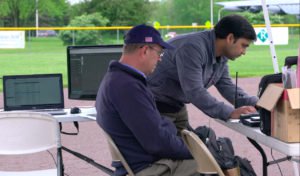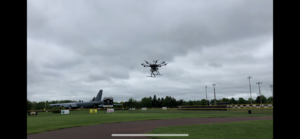ANRA Technologies, a global company with offices in the U.S. and India, has been a major player in unmanned traffic management (UTM) systems testing since the beginning of the NASA program. While Technical Capabilities Level 4 (TCL4) testing and the transfer of the UTM project from NASA to the FAA continues, ANRA has now moved beyond the demonstration phase of their UTM and Remote ID solution to a successful operational assessment. This assessment could offer a significant stepping stone for the FAA in moving Remote ID forward – something the agency has struggled to do (as Commercial UAV News reports, the FAA is no longer planning implementation by July, but has pushed published dates out until September.)
While several other providers claim to have completed demonstrations of their technologies, this one is different. Instead of using proprietary methods and technologies developed by a specific company, this assessment used the draft industry standards for evaluating Remote ID (RID.) It assessed both broadcast and network RID capabilities. Additionally, ANRA and it’s partner Doodle Labs have announced their decision to open source the broadcast-based Remote ID firmware implementation, which can be used for any Linux compatible Wi-Fi hardware module.
Remote ID is generally considered by the commercial industry to be a critical building block of drone integration, necessary before regular flight over people or beyond visual line of sight (BVLOS) can be implemented. While many proposed RID systems use either broadcast solutions, such as the systems from DJI and Intel; or network-based remote ID capabilities, an either-or scenario leaves gaps in coverage that could be exploited deliberately or are unavoidable by circumstance. In broadcast remote ID solutions, drones transmit a signal to a receiver on the ground. It’s a useful method for being able to see and ID (and avoid) drones near you, but over greater distances the connection may be lost. Network ID systems would have operators connect to an FAA-approved service supplier (the FAA calls these USS) much like the service suppliers who currently deliver low altitude notification and authorization capability (LAANC). Networked systems, however, rely upon network connections, which may be lost in remote areas. In all cases, the ultimate goal is to allow authorities to identify all aircraft in the air and connect them with an operator.
Northeast UAS Airspace Integration Research (NUAIR), a non-profit coalition of public, private and research institutions providing aeronautical research, performed the operational assessment at the New York UAS Test Site, with the Oneida Country Sheriff’s Office also participating in the evaluation. This participation is also a critical component – buy-in from law enforcement on UTM and RID capabilities may be significant in limiting the need for local drone regulation, and getting Remote ID for drones fully implemented.
“Several drones were flown by NUAIR staff, with two carrying an unique Wi-Fi broadcast module provided by ANRA and Doodle Labs,to test RID broadcast capability… Part of the assessment included multiple UAS Service Suppliers (USS)at the test site using ANRA’s UAS traffic management (UTM) software to manage drone operations while also serving as the network RID service and display provider. The display applications ingested broadcast RID data and/or interacted with a network RID display provider to present information to the end users.” says an ANRA report on the test.
 “The broadcasting drones transmitted RID advertisements continuously and a Display App on a smartphone used the smartphone’s technology to listen for the drone advertisements, extracted the RID data, and then displayed the live drone location on a map along with its historical path.
“The broadcasting drones transmitted RID advertisements continuously and a Display App on a smartphone used the smartphone’s technology to listen for the drone advertisements, extracted the RID data, and then displayed the live drone location on a map along with its historical path.
Additionally, network publishing was evaluated using ANRA’s software platform to visualize data within an internet-based service area. In this case, the Display App made a request to ANRA network RID display provider which had aggregated RID data for all flights in the area managed by network RID service providers and provided the aggregated data back to the Display App.”
“Another aspect of the assessment included testing a public facing mobile app that provides information about participating drones, such as if the drone was being flown by an approved FAA operator,” says the report.
The FAA, NASA, and industry stakeholders including hardware manufacturers, software providers, and commercial enterprise partners are all in agreement that Remote ID for drones needs to be implented before commercial drone applications can expand. This move from demonstration to evaluation, using the industry standards in development, is a critical step in the right direction.
Miriam McNabb is the Editor-in-Chief of DRONELIFE and CEO of JobForDrones, a professional drone services marketplace, and a fascinated observer of the emerging drone industry and the regulatory environment for drones. Miriam has a degree from the University of Chicago and over 20 years of experience in high tech sales and marketing for new technologies.
Email Miriam
TWITTER:@spaldingbarker
Subscribe to DroneLife here.
https://dronelife.com/2019/05/30/anra-technologies-moves-beyond-testing-of-utm-and-remote-id-heres-why-thats-significant/
 Unmanned Aerial Vehicle The latest drone news
Unmanned Aerial Vehicle The latest drone news





